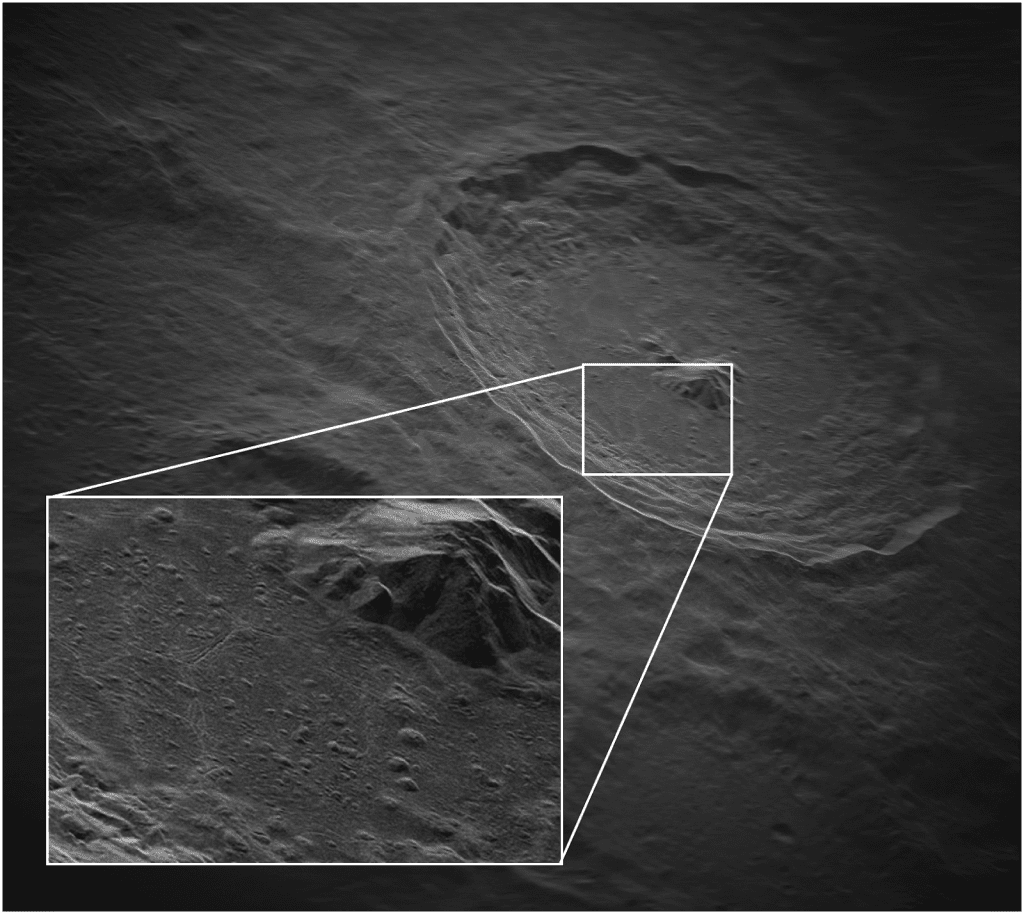Over the last several years, radio astronomers at the Green Bank Telescope have been working on developing a prototype system to use radar to create images of distant bodies of the Solar System. That includes planets and moons, but also asteroids and comets, including those that could be dangerous to us. A full version of this intriguing machine is being developed, but so far incredible images of the Moon have been snapped.
In 2021, it was the Hadley region on the Moon’s near-side, the landing site of Apollo 15. Now, the latest image focuses on the Tycho crater, which was captured with a 5-meter (16.4-foot) resolution. These are the highest resolution images of the Moon’s surface from Earth, revealing new details about the region.

The radar image of Tycho’s crater, showing a 5-meter resolution detail. Image credit: Raytheon Technologies.
The project is a collaboration between the National Radio Astronomy Observatory (NRAO), Green Bank Observatory (GBO), and Raytheon Intelligence & Space (RIS). The current version uses a low-power radar transmitter up to 700 watts of output power at 13.9 gigahertz. The radio waves bounce on the surface of the Moon and are then reflected back off. These waves are then collected by the ten 25-meter antennas of the Very Long Baseline Array (VLBA).
“It’s pretty amazing what we’ve been able to capture so far, using less power than a common household appliance,” emphasizes Patrick Taylor, radar division head for GBO and NRAO, in a statement.
The full version will have 500 kilowatts of power and will be using not just the VLBA but also the future Next Generation Very Large Array (ngVLA). That is almost 1,000 times the output power. And it will be a key player in planetary defense: it will be able to detect, track, and determine the properties of hazardous asteroids.
“In our tests, we were able to zero in on an asteroid 2.1 million kilometers [1,304,880 miles] away from us – more than 5 times the distance from the Earth to the Moon. The asteroid is about a kilometer [0.6 miles] in size, which is large enough to cause global devastation should there be an impact,” adds Taylor, “With the high-power system, we could study more objects much further away. When it comes to developing strategies for possible impacts, having more warning time is everything.”
The next step will be a medium-power radar transmitter of at least 10 kilowatts, about 14 times more powerful than the current type. This will help refine the observation strategy before the deployment of the final version.
Source Link: New Radar Images Are The Highest Resolution Pictures Of The Moon Ever Taken From Earth